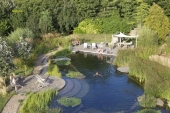












 Check out the concept image I attached. That thing looks radical. I want to live in that.
Check out the concept image I attached. That thing looks radical. I want to live in that.



[img]http://i109.photobucket.com/albums/n52/havlik1/permie%20pics2/permiepotrait3pdd.jpg[/img]
"One cannot help an involuntary process. The point is not to disturb it. - Dr. Michel Odent




 1
1














[img]http://i109.photobucket.com/albums/n52/havlik1/permie%20pics2/permiepotrait3pdd.jpg[/img]
"One cannot help an involuntary process. The point is not to disturb it. - Dr. Michel Odent





Laughter is the best medicine.
http://www.lawntimes.com




dvmcmrhp52 wrote:
My dream is to build a stone house from the rocks on the property, but I'm doubting I'll live long enough.




dvmcmrhp52 wrote:
My dream is to build a stone house from the rocks on the property, but I'm doubting I'll live long enough.
[img]http://i109.photobucket.com/albums/n52/havlik1/permie%20pics2/permiepotrait3pdd.jpg[/img]
"One cannot help an involuntary process. The point is not to disturb it. - Dr. Michel Odent


















"the qualities of these bacteria, like the heat of the sun, electricity, or the qualities of metals, are part of the storehouse of knowledge of all men. They are manifestations of the laws of nature, free to all men and reserved exclusively to none." SCOTUS, Funk Bros. Seed Co. v. Kale Inoculant Co.








"If you want to save the environment, build a city worth living in." - Wendell Berry





|
So then I told Joseph Stalin to piss off! Remember that tiny ad?
Learn Permaculture through a little hard work
https://wheaton-labs.com/bootcamp
|






